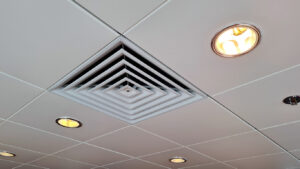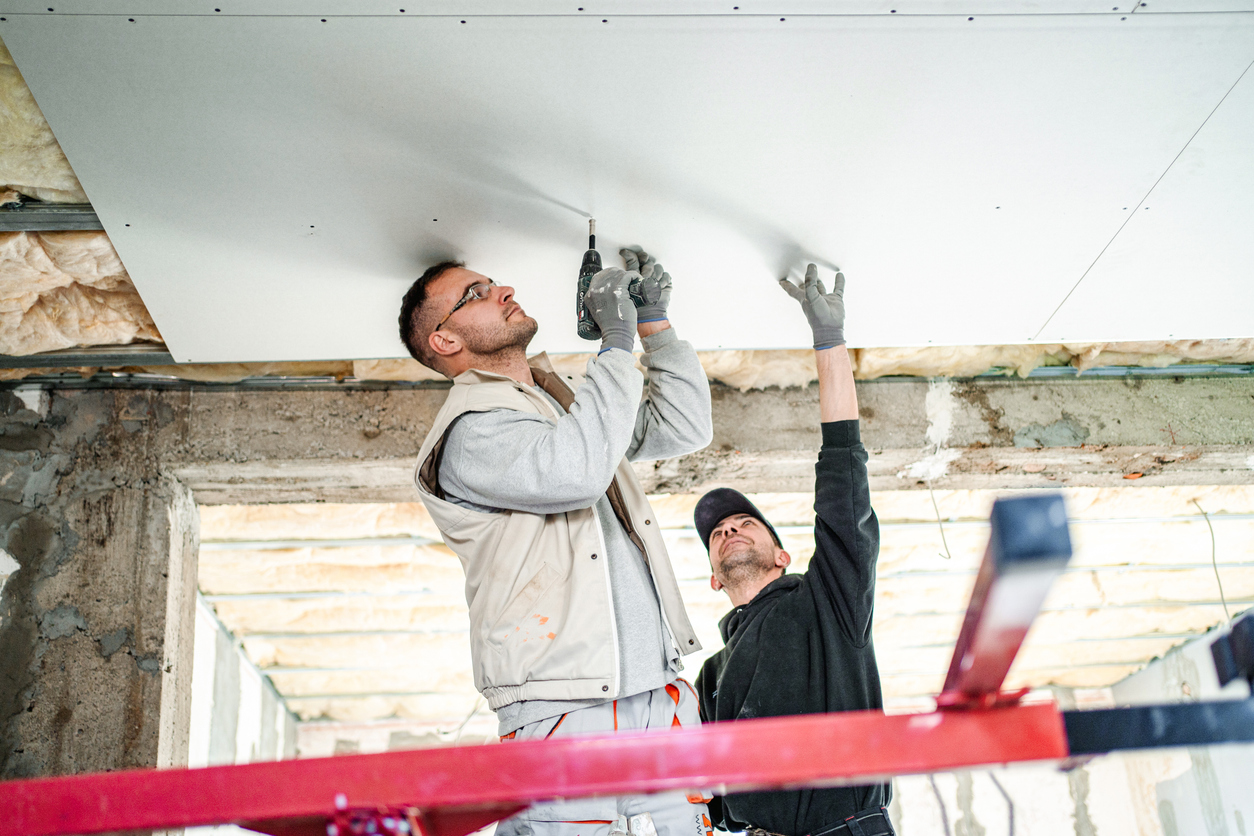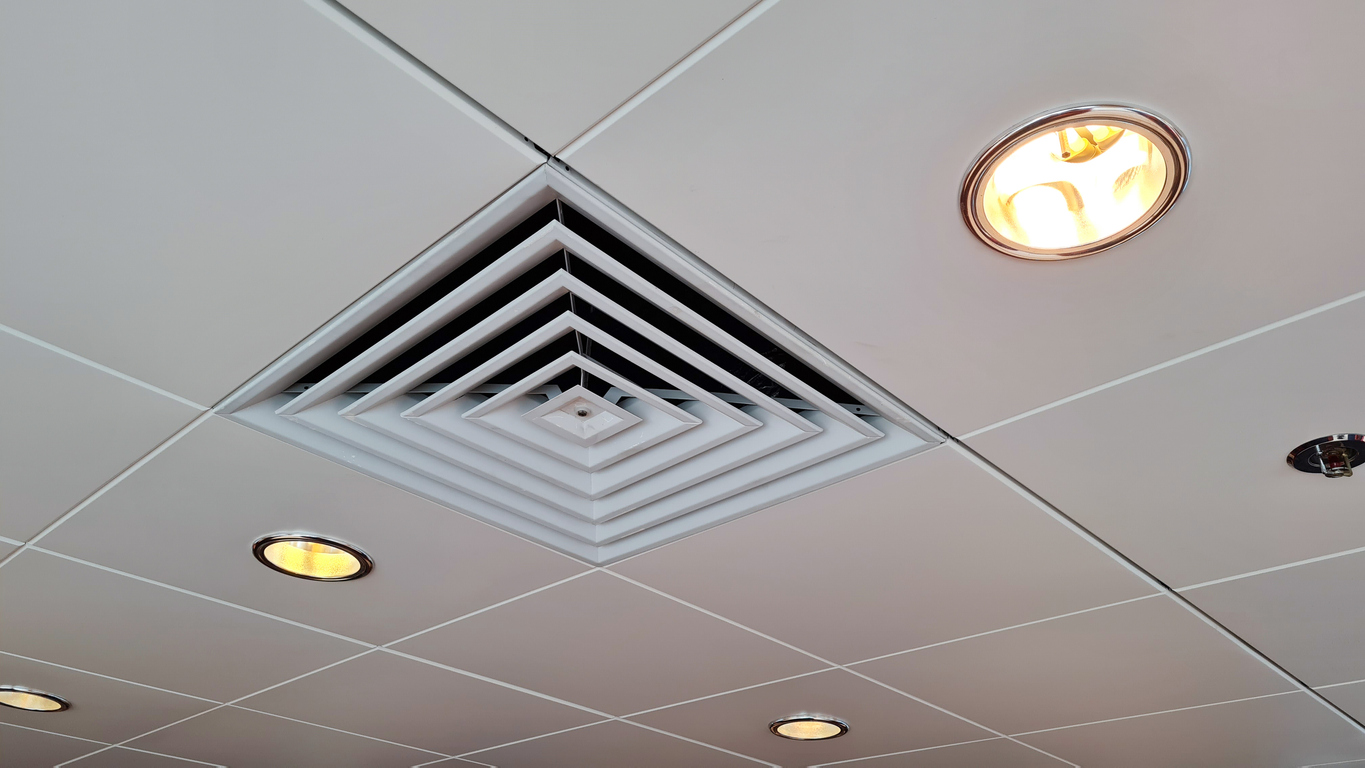Choosing the Best Ceiling for Your Finished Basement

At Ideal Remodeling, we’ve helped countless South Jersey homeowners transform their basements into beautiful, functional spaces. One of the most common questions we hear is: “What’s the best ceiling finish for my basement?” The right choice depends on factors like aesthetics, accessibility, and budget. Below, we break down the pros and cons of two of the most popular basement ceiling options—drywall and drop ceilings—to help you make an informed decision.
Drywall Ceilings

A drywall ceiling is a great way to make your basement feel like an extension of the rest of your home. It creates a polished, cohesive look and can be customized with paint and other design elements.
Pros:
✅ Seamless Look: A drywall ceiling makes your basement feel like any other floor in your home—without that typical “basement” feel.
✅ Customizable: Can be painted any color, allowing for endless design possibilities.
✅ Maximizes Ceiling Height: Drywall takes up less space than a drop ceiling—potentially gaining you an extra 3 inches of height, which can make a big difference in a basement.
✅ Sound Absorption: More effective at blocking noise than drop ceilings. Additional soundproofing options can be incorporated if needed.
✅ Cost-Effective: While labor-intensive, drywall materials are generally less expensive than high-end ceiling tiles.
✅ Fast Installation: A professional crew can complete a 1,000 sq. ft. basement ceiling in about a week.
Cons:
❌ Challenging Installation: Large drywall sheets can be difficult to maneuver into basements with tight entrances.
❌ Obstacles Require Framing: Ductwork, plumbing, and electrical lines often need to be framed around, which can add to costs.
❌ Limited Access: Unlike a drop ceiling, drywall doesn’t provide easy access to pipes and wiring. Future repairs or upgrades may require cutting into the ceiling.
Drop Ceilings

Drop ceilings (also called suspended ceilings) have long been a go-to choice for basements. They provide easy access to plumbing, electrical work, and ductwork while offering a clean, finished appearance.
Pros:
✅ Quick Installation: A professional crew can install a 1,000 sq. ft. drop ceiling in just one day.
✅ Easy Access to Utilities: Need to run new wiring or fix a pipe? Just remove a tile—no demolition required.
✅ More Style Options Than Ever: Modern ceiling tiles come in various textures and patterns, adding visual interest to the space.
✅ Simple Repairs: If a tile gets damaged, it’s easy and inexpensive to replace.
✅ Works Around Obstacles: No need for complicated framing—pipes and ductwork can be easily concealed beneath the tiles.
Cons:
❌ Can Feel Institutional: Budget-friendly tiles often look generic and uninspiring. Higher-end options offer more style but come at a higher price.
❌ Reduces Ceiling Height: Drop ceilings require a clearance of at least 4-6 inches, which can make low basements feel even tighter.
❌ Less Soundproofing: While some tiles offer acoustic benefits, drywall generally does a better job at absorbing sound.
❌ Limited Color Options: Most ceiling tiles focus on texture rather than color, though black and gray options are available.
Which Ceiling Option Is Right for You?
Both drywall and drop ceilings have their advantages. If you want a seamless, high-end look and aren’t concerned about future access to utilities, drywall may be the best choice. If easy access and quick installation are a priority, a drop ceiling might be the better option.
Still unsure? Ideal Remodeling is here to help! Call us at (856) 939-1069 or fill out our contact form to discuss your basement project today.


